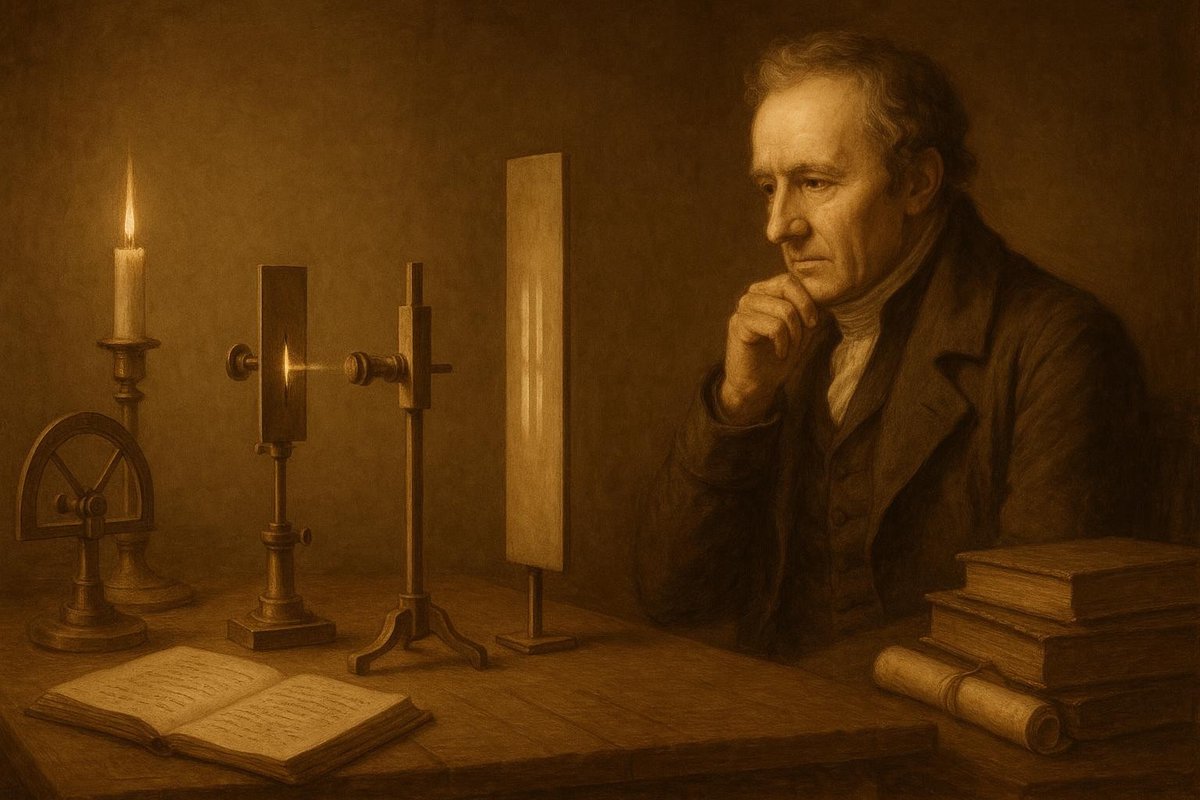
Hypothesis & Context
The mysterious dance of particles through the double-slit experiment has long been a cornerstone in understanding the nature of light. But what can this tell us about the duality of human understanding itself? To unravel this, we must first peer into the historical tapestry of scientific thought.
- In the early 1800s, the wave theory of light, proposed by Thomas Young, challenged the prevailing particle theory.
- Yet, uncertainty remained. How could light display the traits of both particles and waves?
- The scientific community was divided, much like how humans wrestle with opposing beliefs.
It was a time when society was on the cusp of the industrial revolution, a period rife with change and reevaluation of old truths. This scientific unrest mirrored humanity’s broader quest for understanding—a balancing act between innovation and tradition, logic and belief.
Setup & Method
Imagine a beam of light, innocuous yet potent, as it approaches a barrier with two narrow slits. This setup, a simple yet profound experiment, would soon reveal the enigmatic nature of reality.
- A coherent light source was directed at a plate with two slits.
- Behind the plate, a screen to capture the resulting pattern from the light.
- As light passed through, a pattern of alternating dark and bright bands appeared, like ripples in a pond.
This interference pattern suggested that light behaved as a wave. Yet, when observed, the pattern collapsed into two distinct bands, as if particles had passed through. It was a visceral reminder of how observation itself can alter reality, echoing the complexity of human perception and understanding.
Results & Reactions
The results were both fascinating and perplexing. When unobserved, light behaves as a wave, forming an interference pattern. But under observation, it acts as discrete particles.
- The experiment stirred debates in scientific circles, challenging the very foundations of physics.
- Albert Einstein famously remarked, “It seems as though we must use sometimes the one theory and sometimes the other.”
- This dual behavior became a focal point in the birth of quantum mechanics.
Much like the ambiguity in human nature, the experiment revealed that light could not be fully understood through a singular lens. It demanded a paradigm shift, opening doors to new realms of thought where certainty and uncertainty coexist.
Implications
The implications extend beyond the confines of physics, touching the essence of human understanding itself. Does the behavior of particles reflect our own dual nature?
- Just as particles exhibit duality, humans grapple with contrasting emotions and beliefs.
- The experiment invites us to question the limits of perception and reality.
- In a world where observation shapes outcomes, the power of perspective takes on new meaning.
This discovery compels us to embrace the enigmatic, to find harmony in contradiction, and to seek truths that transcend binary thinking. It is a testament to the complex tapestry of both the universe and the human mind.
As we continue to explore these mysteries, the double-slit experiment remains a beacon of intellectual curiosity, challenging us to rethink our understanding of reality itself.
Fuel Someone Else’s Curiosity
If this journey into the nature of light and human understanding has sparked your interest, why not share it? Engage others in this timeless scientific dialogue and explore the infinite possibilities of thought together.

Leave a Reply